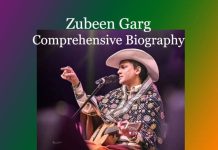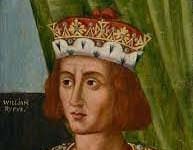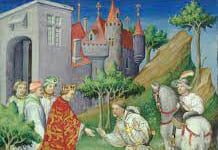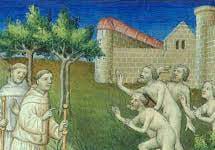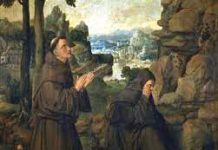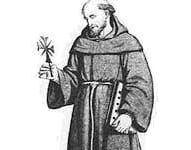Discover the life and legacy of Matsuo Basho, Japan’s most celebrated haiku poet. Explore his journey, poetic achievements, and influence on Japanese literature in this comprehensive biography.
Matsuo Basho: Brief Biography
Matsuo Basho was a Japanese haiku poet and writer who lived during the Edo period in Japan (1603-1868). He was born in 1644 in the city of Ueno, in Iga Province (modern-day Mie Prefecture), and died in 1694 in Osaka.
Matsuo Basho was known for his innovative approach to haiku, a traditional form of Japanese poetry that typically consists of 17 syllables arranged in a 5-7-5 pattern. He is considered one of the greatest haiku poets in the history of Japanese literature and is credited with elevating haiku to an art form.
Basho‘s life was marked by a series of travels, including a long journey through the northern provinces of Japan in 1689, which is documented in his famous travel diary, “The Narrow Road to the Deep North.” This diary, which was written in a mixture of poetry and prose, describes Basho’s encounters with people, landscapes, and nature, and reflects his philosophical and spiritual beliefs.
In addition to his travels, Matsuo Basho was also a teacher and mentor to several generations of haiku poets. He was known for his generosity and kindness, and for his profound wisdom, which he expressed in his poems and in the haiku gatherings he hosted.
Basho’s haiku poems are characterized by their simplicity, naturalness, and ability to evoke strong emotions in the reader. He was an expert in capturing the essence of nature, and many of his poems are considered masterpieces of the haiku form.
Matsuo Basho’s influence on Japanese literature and culture has been immense, and his poems are still widely read and admired in Japan today. His works have been translated into many languages, and he is considered one of the most important poets of the classical Japanese tradition.
In conclusion, Basho Matsuo was a pioneering Japanese haiku poet and writer who lived in the Edo period. He is widely regarded as one of the greatest haiku poets in the history of Japanese literature and his works continue to inspire and influence generations of writers and poets. His legacy as a master of haiku, a teacher, and a spiritual seeker, lives on to this day. 0 0 0.
Matsuo Basho: Comprehensive Biography
Introduction
Matsuo Basho (1644–1694) is widely regarded as one of Japan’s greatest poets and the master of haiku, a traditional Japanese poetic form. His deep connection to nature, combined with his spiritual journey through Zen Buddhism, shaped his simple yet profound poetry, which remains beloved in Japan and around the world. Basho revolutionized the haiku, turning it into a serious art form that conveyed complex emotions and philosophical reflections in just 17 syllables. His travels across Japan inspired much of his work, allowing him to capture the beauty of the landscapes, the fleeting nature of life, and the delicate balance between human experience and nature.
Early Life
Matsuo Basho was born Matsuo Kinsaku in 1644 in Ueno, Iga Province (modern-day Mie Prefecture), Japan, into a low-ranking samurai family. His father, Matsuo Yozaemon, was a minor samurai who served a local lord, providing Basho with a stable, if modest, upbringing. As a young boy, Basho received a classical education, which included lessons in calligraphy, literature, and poetry, areas that would later shape his life’s work.
In his youth, Basho entered the service of Todo Yoshitada, a fellow samurai and an aspiring poet. It was through his relationship with Yoshitada that Basho was introduced to the world of haikai no renga, a collaborative linked-verse form of poetry that eventually evolved into the haiku. Together, the two composed poems, and Basho’s love for poetry flourished during this period.
Transition to a Poet’s Life
After the sudden death of Yoshitada in 1666, Basho’s life took a significant turn. He abandoned the samurai life and moved to Edo (modern-day Tokyo), where he immersed himself in the vibrant cultural and literary scene. Despite financial struggles, Basho was determined to pursue a career as a poet. He studied with leading poets of the time and began to build a reputation for his own unique style of haikai poetry.
In the 1670s, Basho started writing poetry under various pen names, but it wasn’t until the 1680s that he adopted the name “Basho,” after a banana plant (bashō) that grew in his hut. This simple plant, known for its large, delicate leaves, became a symbol of Basho’s poetic identity, representing simplicity, impermanence, and the natural world—qualities that would define his poetry.
Zen Buddhism and Travel
Basho’s poetry was deeply influenced by his study of Zen Buddhism. He sought to live a life of simplicity, humility, and harmony with nature, all of which are reflected in his works. His spiritual journey shaped his view of the world, focusing on the transient and ever-changing nature of life, known in Japanese as *mono no aware* (the awareness of impermanence).
Travel played a central role in Basho’s life and poetry. Between 1684 and 1694, he undertook a series of long journeys across Japan, documenting his experiences in both poetry and prose. His most famous journey, which he undertook in 1689, was the inspiration for his travelogue, ‘Oku no Hosomichi’ (The Narrow Road to the Deep North). This work is a blend of haiku and narrative prose, capturing the landscapes, people, and spiritual insights he encountered along the way.
Basho’s haiku from these travels often express the fleeting beauty of nature and the passing of time, themes that resonate with the Buddhist concept of ‘mujō’ (impermanence). One of his most famous haiku, written during these travels, reads:
“An old pond
A frog jumps in—
The sound of water.”
This haiku, often cited as one of Basho’s finest, reflects his ability to capture a moment in nature with both simplicity and depth, evoking a sense of stillness and contemplation.
Poetic Style and Influence
Basho’s poetry is characterized by its simplicity, depth, and ability to evoke powerful emotions with minimal words. He transformed the haiku, which had previously been seen as light verse, into a serious form of art. Basho’s haiku often highlight the beauty of nature, but they also delve into human emotions, spirituality, and the passage of time.
His writing style, known as ‘karumi’ (lightness), is subtle and restrained, avoiding overly elaborate language or heavy sentimentality. Instead, Basho’s haiku convey deep meaning through the careful choice of words and imagery. His use of natural elements—such as frogs, the moon, cherry blossoms, and rain—creates a connection between the human experience and the natural world, a hallmark of his poetry.
Basho’s work had a profound influence on subsequent generations of poets, not only in Japan but also internationally. His emphasis on simplicity and mindfulness resonated with later haiku masters and contributed to the global popularity of haiku as a literary form.
Later Years and Death
In the last decade of his life, Basho continued to travel and write, despite declining health. He remained dedicated to his poetic practice and continued to refine his style, focusing on the themes of transience, solitude, and the beauty of the natural world. Basho spent much of his final years traveling across Japan, teaching students, and composing poetry.
Matsuo Basho passed away on November 28, 1694, in Osaka at the age of 50. His death marked the end of a remarkable life dedicated to the art of haiku and the pursuit of spiritual enlightenment. His final haiku, written shortly before his death, reflects his lifelong meditation on the passage of time:
“Falling sick on a journey,
My dream goes wandering
Over withered fields.”
Legacy
Matsuo Basho’s impact on Japanese literature is immeasurable. He elevated haiku to a serious art form and set a standard for simplicity, depth, and connection with nature that still inspires poets today. His travelogues and poetry continue to be studied and revered, both in Japan and internationally, as examples of profound artistic expression.
Basho’s emphasis on capturing fleeting moments and his ability to evoke the beauty and melancholy of life’s impermanence have made him one of the most cherished figures in Japanese literary history. His works remain a vital part of Japan’s cultural heritage and continue to inspire writers, poets, and readers around the world.
Conclusion
Matsuo Basho’s life as a poet, traveler, and spiritual seeker made him a transformative figure in the history of Japanese literature. Through his mastery of haiku and his journeys across Japan, he was able to capture the essence of the natural world and the human condition with unparalleled elegance and depth. Basho’s legacy endures not only in the world of poetry but also in the hearts of those who find beauty in the fleeting moments of life.
Matsuo Basho: Facts in Brief
Matsuo Basho: Life
- Full Name: Matsuo Basho (松尾 芭蕉)
- Birth: 1644, Ueno, Iga Province (modern-day Mie Prefecture), Japan
- Death: November 28, 1694, Osaka, Japan
- Occupation: Haiku poet, essayist, and traveler
- Era: Edo period (1603–1868)
- Philosophical Focus: Zen Buddhism, nature, simplicity, impermanence
Key Contributions:
- Elevated haiku from light verse to a serious art form.
- Blended poetry and prose in travelogues, the most famous being ‘Oku no Hosomichi’ (The Narrow Road to the Deep North).
- Emphasized the themes of nature, spirituality, and the transient nature of life.
Major Works:
- ‘Oku no Hosomichi’ (The Narrow Road to the Deep North)
Famous haiku:
“An old pond
A frog jumps in—
The sound of water.”
Legacy: Regarded as one of Japan’s greatest poets, Basho revolutionized the haiku form and left a lasting impact on Japanese literature and global poetry.
Matsuo Basho: FAQs
Who was Matsuo Basho?
Matsuo Basho (1644–1694) was a renowned Japanese poet and a master of haiku, a short form of Japanese poetry. He is celebrated for transforming haiku into a serious literary art form, blending simplicity, nature, and profound philosophical reflections.
What is Matsuo Basho best known for?
Basho is best known for his haiku poetry and his travelogues, particularly *Oku no Hosomichi* (The Narrow Road to the Deep North). His haiku captured the beauty of nature, the passage of time, and the essence of Zen philosophy.
What are Matsuo Basho’s most famous works?
Some of Basho’s most famous works include:
‘Oku no Hosomichi’ (The Narrow Road to the Deep North) – A travelogue blending haiku and prose.
His iconic haiku:
“An old pond
A frog jumps in—
The sound of water.”
What is Matsuo Basho’s style of poetry?
Basho’s poetry is known for its simplicity, subtlety, and deep connection to nature. He emphasized ‘karumi’ (lightness) and often focused on themes like impermanence, solitude, and the beauty of fleeting moments.
How did Matsuo Basho influence haiku poetry?
Basho elevated haiku from a playful, light verse to a respected literary form. He introduced deeper philosophical insights, primarily drawn from Zen Buddhism, into haiku, making it a reflection of both the natural world and human emotions.
What role did travel play in Matsuo Basho’s life?
Travel was central to Basho’s life and work. He undertook several long journeys across Japan, drawing inspiration from the landscapes and experiences he encountered. His travels inspired some of his most famous poetry and the travelogue ‘Oku no Hosomichi’.
How did Zen Buddhism influence Matsuo Basho’s poetry?
Zen Buddhism had a profound impact on Basho’s worldview and poetry. Its focus on simplicity, mindfulness, and the transient nature of life resonated with his writing, and many of his haiku reflect Buddhist themes of impermanence and the fleeting beauty of nature.
What themes are prevalent in Matsuo Basho’s haiku?
Common themes in Basho’s haiku include nature, the changing seasons, impermanence (‘mujō’), solitude, and the interconnectedness of human life and the natural world.
What is Matsuo Basho’s legacy?
Basho’s legacy endures as Japan’s greatest haiku poet. His ability to express profound ideas through simplicity and his elevation of haiku to a high art form have inspired poets and readers in Japan and around the world. His works continue to be studied and admired for their beauty and depth.
N. B. This article originally belongs to the book, ‘Brief Biographies of Ancient Thinkers and Writers‘ by Menonim Menonimus.
Books of Biography by M. Menonimus:
- The World Writers-Brief Biographies
- Introduction to World Writers
- Introduction to World Personalities
- Love of Reputed Persons ..
Additional Searches:


